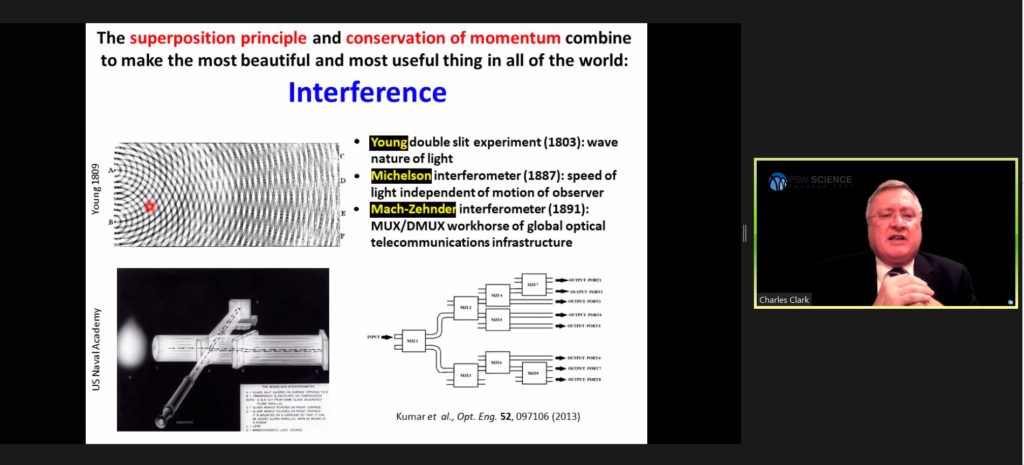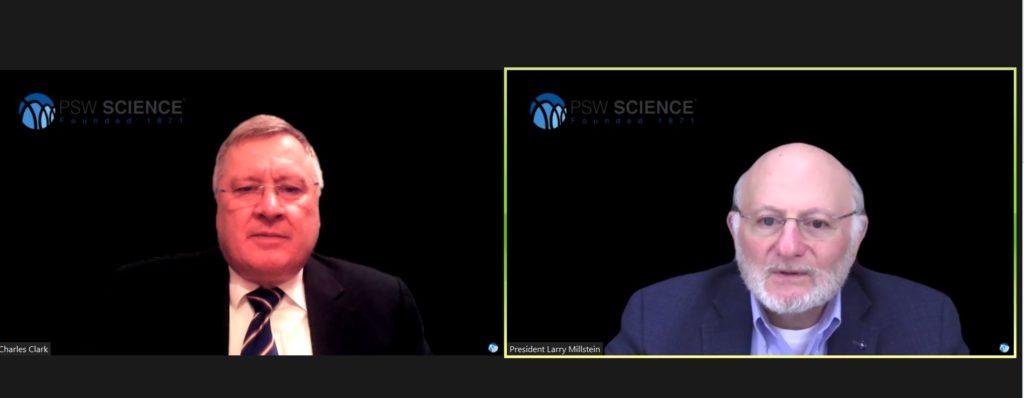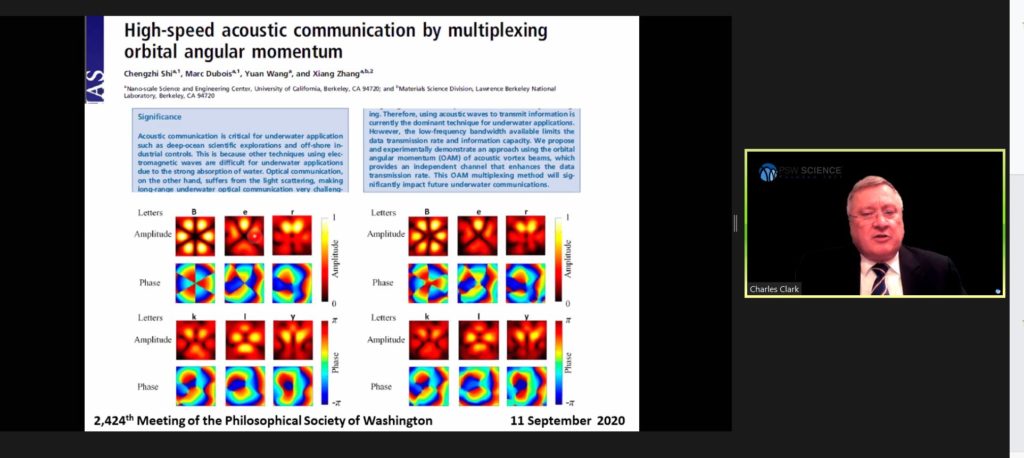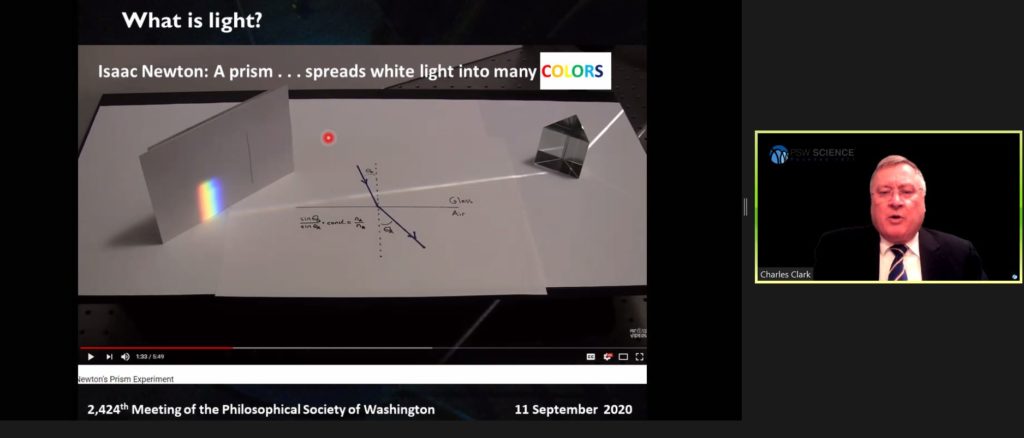Vortices of Light and Matter Waves
A New Twist on Light and Particles
Charles W. Clark
Fellow at the National Institute of Standards and Technology
Fellow at the Joint Quantum Institute of NIST and the University of Maryland
About the Lecture
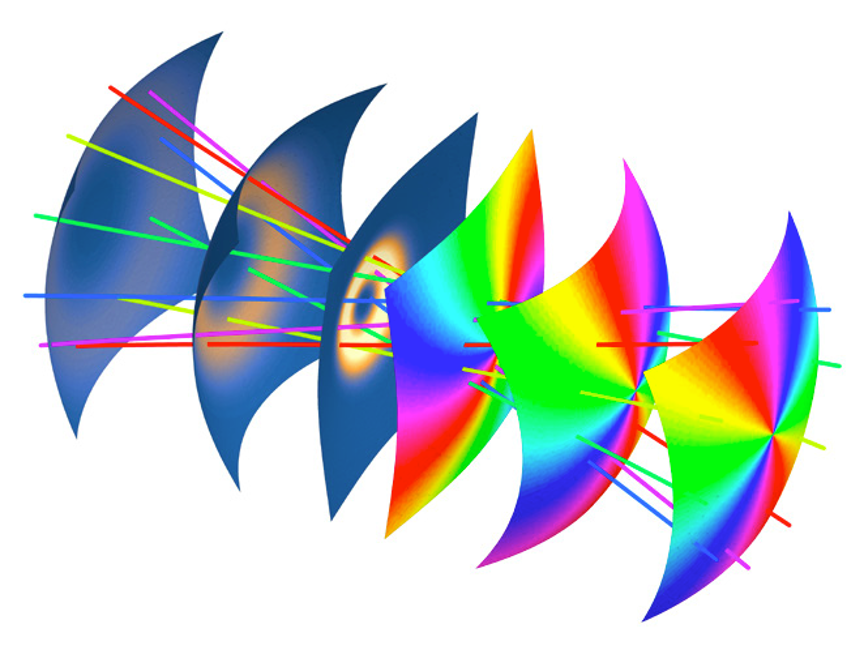
Everyone who can see has an intuitive experience of light. It seems to arrive in straight rays right into our eyes!
Of course, we have known for some time that light is a type of wave or quantum particle motion, with a polarization perpendicular to its direction of propagation. Only since the early 1990s, however, has it been fully appreciated we can exploit another intrinsic property of light: its ability to wrap around itself in quantized motion as it travels (optical “orbital angular momentum” or OAM). This also occurs in other wave phenomena, including the wave mechanics of quantum particles.
This lecture will describe the basic elements of twisted light and matter, and it will describe their recent applications in areas such as communication, encryption, microscopy, measurement and vision.
About the Speaker
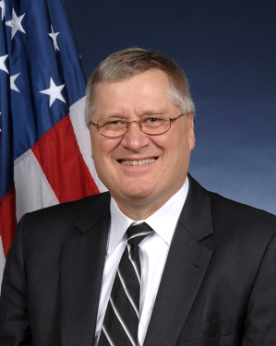
Charles Clark is a NIST Fellow at the National Institute of Standards and Technology. He is also a JQI Fellow and past Co-Director of the Joint Quantum Institute of NIST and the University of Maryland. Following postdoctoral work in England, he joined NIST (then called the National Bureau of Standards), and he has stayed there ever since. For a decade during his tenure at NIST Charles served as a program manager in the U.S. Navy’s Office of Naval Research.
Charles works on basic and applied problems of atomic, molecular, optical and neutron physics and has a keen interest in vision systems in biology.
He has held visiting positions at the University of Oxford, National University of Singapore, Australian National University and University of Malaya.
Charles earned his BA in Mathematics and Physics at Western Washington State, his SM at the University of Chicago, and his PhD at the University of Chicago.
More information is available at https://jqi.umd.edu/people/charles-clark.
Minutes
On September 11, 2020, by Zoom videoconference broadcast on the PSW Science YouTube channel, President Larry Millstein called the 2,424th meeting of the Society to order at 8:02 p.m. EDT. He announced the order of business, summarized the annual report of the Society, and welcomed new members. The Recording Secretary then read the minutes of the previous meeting.
President Millstein then introduced the speaker for the evening, Charles W. Clark, Fellow at the National Institute of Standards and Technology and Fellow at the Joint Quantum Institute and the University of Maryland. His lecture was titled, “Vortices of Light and Matter Waves: A New Twist on Light and Particles.”
Clark began by discussing the nature of light. He summarized Newton’s prism experiments dispersing and recombining rays of light. He noted these experiments are the basis of multiplexing in modern optical fiber telecommunications. He then explained conservation of momentum and super-position of waves. These two principles combine to make interference.
Interference enabled experiments that determined the wave nature of light and the independence of light’s speed from the motion of an observer. Interference also enables interferometers to accomplish the multiplexing and de-multiplexing operations necessary to operate modern fiber optic networks. More recently, interference enabled the Laser Interferometer Gravitational-Wave Observatory, or LIGO, to observe gravitational waves.
Clark then discussed twisting light. He described the 1990 holograms of Bazhenov, Vasnetsov, and Soskin, which used an interferometer and optical fibers to produce laser beams with wave front screw dislocations. Clark then explained plane waves, Bessel beams, and orbital angular momentum, or OAM.
OAM may produce a corkscrew of light around a central axis, generated by using a spiral phase plate. OAM may also be seen in phased particle waves. Clark said much of the interest in OAM states of light arises from their usefulness in multiplexing data. The same ideas can be applied to ultrasound for communication between underwater sites.
Researchers at the University of Waterloo are also using vortex states of light to determine whether they can be used to correct vision or diagnose ocular emissions.
Clark then described the mystery of quantum interference as illustrated by the double slit experiment, by which it appears a particle takes two paths. He then explained a series of experiments performed at the NIST Center for Neutron Research.
Neutrons have no electric charge and only interact with nuclei through the strong interaction force. They also propagate like light within materials. These characteristics allow neutrons to penetrate matter and enable scientists to “see” through objects. Applying the principles of optical interferometry to phased matter, scientists have developed neutron interferometers.
NIST scientists have experimented with applying the ideas of twisted light to neutron beams. To put quantized magnitudes of angular momentum into neutron beams, it was critical to tailor phase-plates such that step values were the same. The resulting interferograms showed that angular momentum was transferred to the neutron waves.
NIST scientists have also made forays into neutron holography and multiplexing phase-plate assemblies by using magnetic fields as a means to create a rectangular pattern of neutron beams with OAM.
After the question and answer period, President Millstein thanked the speaker, made the usual housekeeping announcements, and invited guests to join the Society. At 9:31 p.m., President Millstein adjourned the meeting.
Temperature in Washington, D.C.: 23° C
Weather: Mostly Cloudy
Concurrent Viewers of the Zoom and YouTube live stream, 90 and views on the PSW Science YouTube and Vimeo channels: 341.
Respectfully submitted,
James Heelan, Recording Secretary
